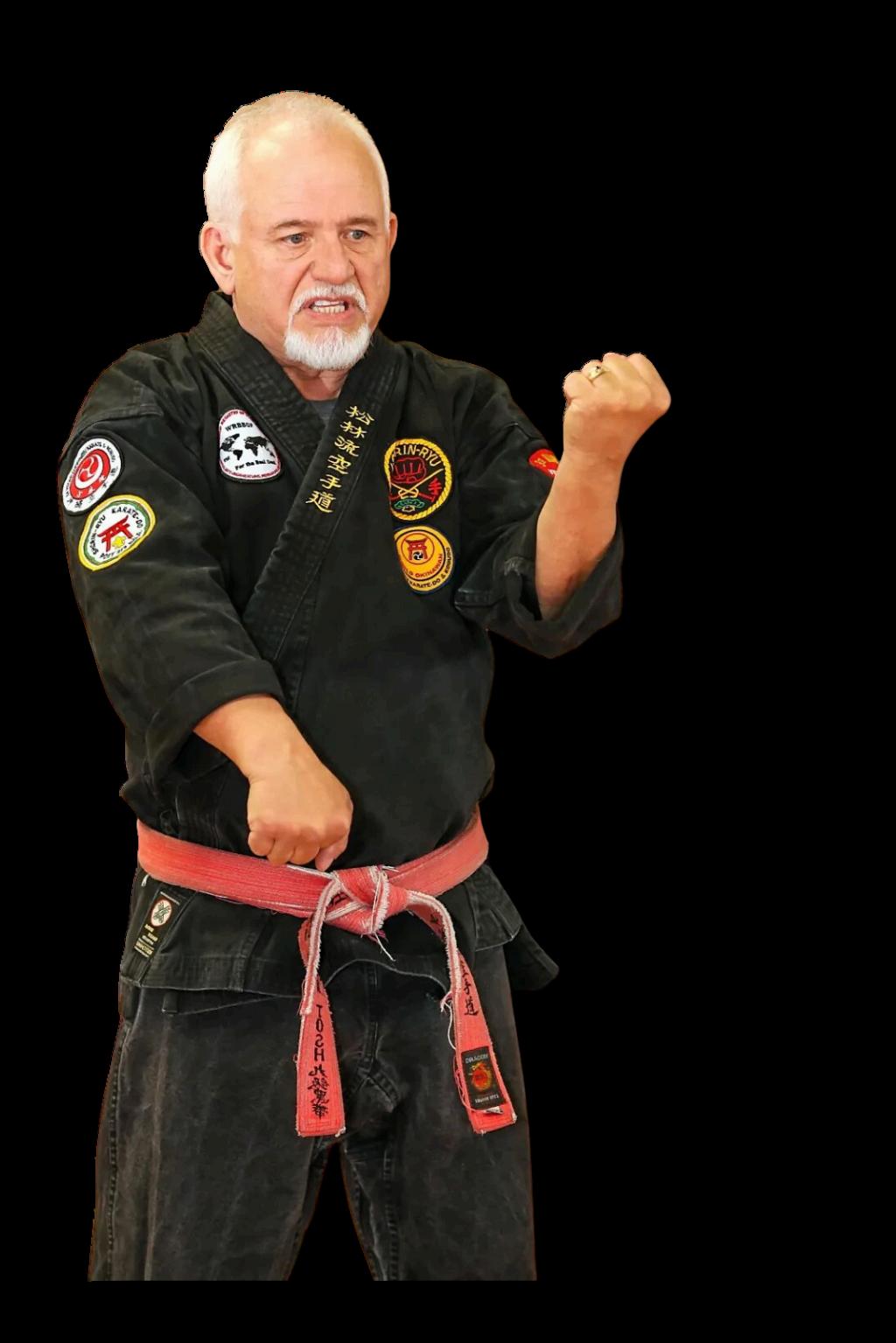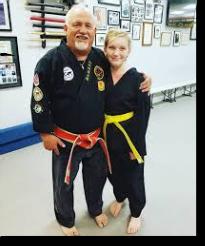
7 minute read
THE KARATEKA
Written By Dan Tosh
What is karate, and why has it endured for so many years? There are those who speak ill of it, while others praise it. Could it be misused or misunderstood by those who say it is not effective?
The art of empty-hand defense and combat has been around for maybe thousands of years.
Probably from a time when it may have been the only way to stop aggression before the Stone Age.
The movements used are meant to be a smarter way for offensive and defensive situations. But why does it work or not? The key may be the way one develops the repetitive style of training.
All techniques or what is also known as “wazas” that are time or battle tested should be effective, right?
Not necessarily, because it requires something more. That something more is known as commitment. Yes, commitment is something that is missing from so many teachings. To know hundreds or even thousands of techniques mean nothing if one cannot commit to an action, enough at an elevated age.
So, does this mean that your ability to defend yourself has a shelf life? At what age do you become inept? When do you stop being able to fight back against aggressive or dangerous attacks?
I always tell my students, karate must work for everyone, not just the big and strong. If you make the outcome better, then your karate is good.
For karate to be good it must be rehearsed in the form of kata, bunkai and tuite’ Kata becomes the foundation that if done properly and, with the right mindset to see the meaning of each move, can be a life changing thing
To move out of the way, to put your arm up, to respond in kind and to stop the attack, is a commitment Karate only works if used at the right time for the right reason.
Every kata that one learns, gives the karateka more lessons regarding reaction and counters. Every kata gives more rules of the way the mind and body need to be effective.

What many don’t understand about kata is that all the movements in all the katas can be combined in any order to form an effective waza. This means that a proper karateka has an almost infinite number of waza.
Every time the karateka does kata, it must be done with emotion, since emotion plays an important role in everyone ’ s life. If you let fear take over, you give your power to the attacker.
You must practice using emotion, to conquer each emotion that can impede your outcome in a hostile situation. I tell my students that we teach self defense against a locomotive, as the train is tons of mass moving down the tracks, that can crush all in its path, yet if you are not in front of it, it can’t hurt you. That I refer to is redirection.
You can redirect the object or yourself by moving. Fighting smarter and not harder, is an important concept of karate. You must never fight another’s fight. Once you do that, you are destined to lose. If there is one rule implemented, it is no longer karate.
Karate has no rules. To strike the throat, eyes, and other vulnerable areas, is fair game when your life is at stake.
So, I must agree that karate does not work well if you only know how to play in a tournament for a trophy. Tournaments have a role, perhaps an important role in the development of karate, as it teaches the practitioner how to overcome the fear of being in the spotlight and being judged by others

There are those who do compete in forms, that have no idea why they do any of the moves as they a void of meaning The movements are more in line with dance than defense. Those who watch and cheer provide fuel to the continuing belief that the individual is a superstar and amazing martial artist. It may be that these events create a false sense of security
I must say that there are those who do both tournament competitions and the real practice of powerful karate, using the unity of mind and body. So, it is a good thing to compete for the positives that come from it Don’t be discouraged if you lose out to those others because a trophy is not the reason you train; it is simply a byproduct In conclusion, proper training means training your mind and body to come together to create the karateka to become complete.
We call it practice because we never stop learning through the repetitive actions required in the art of karate. In the 66 years, I have been continuously training, I still see new applications in the old movements that I have done from the beginning of my journey
There are those who do compete in forms, that have no idea why they do any of the moves as they a void of meaning The movements are more in line with dance than defense. Those who watch and cheer provide fuel to the continuing belief that the individual is a superstar and amazing martial artist. It may be that these events create a false sense of security.
I must say that there are those who do both tournament competitions and the real practice of powerful karate, using the unity of mind and body. So, it is a good thing to compete for the positives that come from it. Don’t be discouraged if you lose out to those others because a trophy is not the reason you train; it is simply a byproduct. In conclusion, proper training means training your mind and body to come together to create the karateka to become complete.
We call it practice because we never stop learning through the repetitive actions required in the art of karate. In the 66 years, I have been continuously training, I still see new applications in the old movements that I have done from the beginning of my journey.

About The Author
Grandmaster Dan Tosh has been training in shorin-ryu karate since 1958. He began his studies at the Coffeyville, Kansas Boys Club, continued his training in Oklahoma and finally California in 1967 under the direction of Sensei Joe Spriggs In 1966, Tosh was promoted to Shodan (1st degree Black Belt)
In 1998 to 9th degree Black Belt by Professor Sig Kufferath, 10th degree Black Belt and friend of Miyagi from Hawaii. Sid Campbell, a shorin-ryu master, was a board member and authenticated the quality of Tosh’s kata and technique. It was long ago decided by Miyagi, that on the celebration of Tosh’s 40 years in shorinryu, he was to become Hanshi or Soke; the official grandmaster of this interpretation of shorin-ryu.
On January 13, 2007 at the WOSKKA annual gathering, Dan Tosh was promoted to 10th degree Black Belt by the Black belt council chaired by Great Grandmaster Al Novak. This honor was bestowed on Dan Tosh in the presence of several Great Grandmasters and Grandmasters including such dignitaries as Bob Wall, Sid Campbell, Al Novak, Carlos Navarro, Eric Lee, Bob Maschmeier, Ernie Reyes, Sr , Tony Thompson, Harry Mok, John Oliver, Gary Lee, Mark Gerry, GregLon Lee and Max Pallen. Grandmaster Dan Tosh is known for his incredible speed of both hand and foot He is an authority in tuite and kata application Dan Tosh has been involved in choreography, movie production, stunt work, workshops and tournament competition for many years.
Dan Tosh is a regular contributor for the INTERNATIONAL MARTIAL ARTS MAGAZINE.









